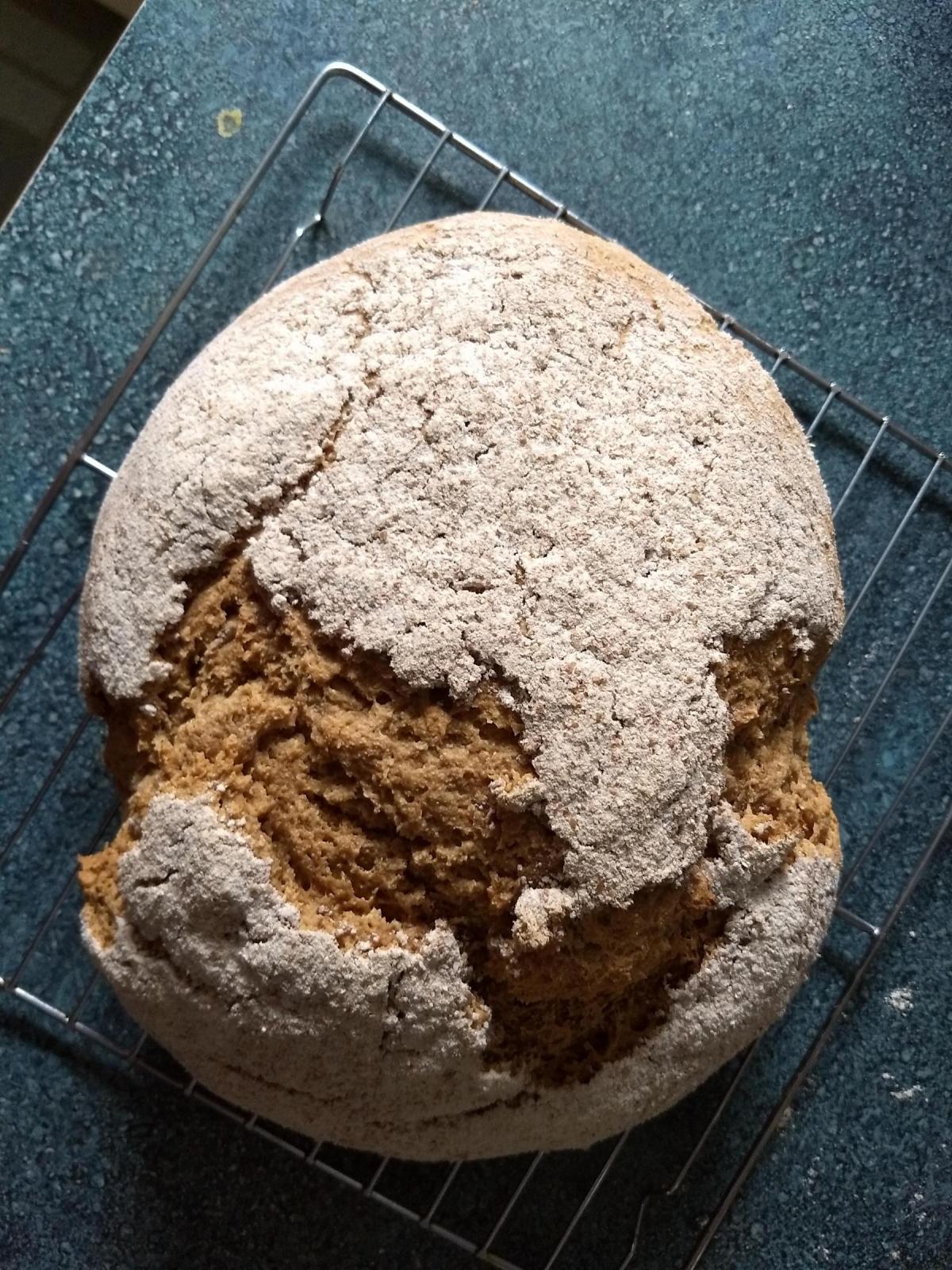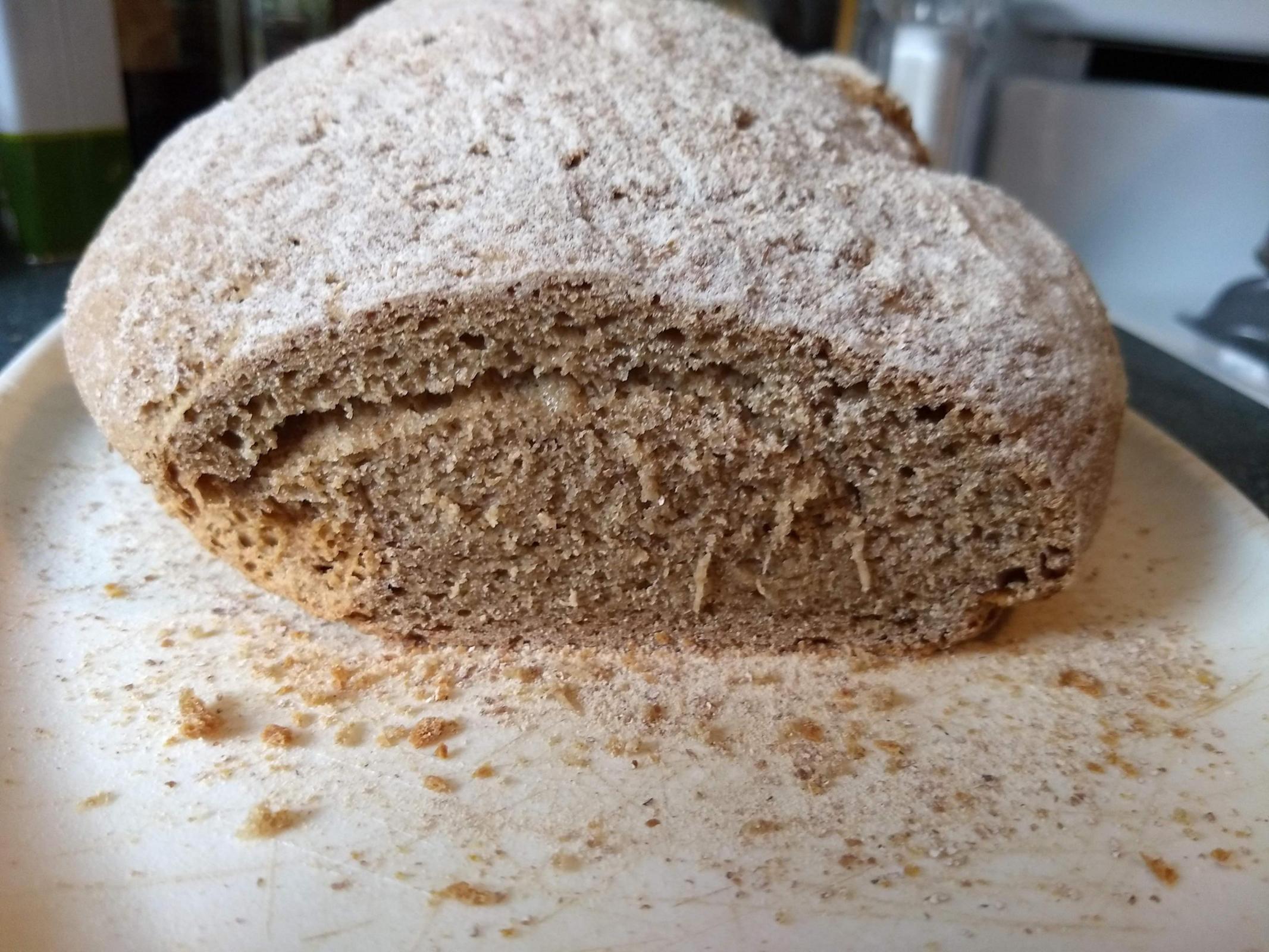
For my first pre-ferment, I tackled Jovial's No-Knead Overnight Artisan Loaf recipe, in which the entire dough (salt included!) is left to sponge for 10–15 hours. I modified the recipe somewhat, subbing instant for active dry yeast and simplifying the baking process, as I don't currently have a banneton or Dutch oven.
Is it a poolish? Is it a biga? No, it's Superman! Maybe it's technically a pâte fermentée since it includes the salt?
In any case, I let the sponge rest for 13 hours, 20 minutes. The Saccharomyces went to town, and I liked the look of the risen sponge, though what do I know? I'm a bear, I suck the heads off fish.


Shaping the dough was harder than expected—I may have over-floured the counter in an attempt to appease the sticky Einkorn gods—and I ended up tearing the surface a little, hence the yawning crevice in the finished loaf. Perhaps that was also the reason for the lopsided dinosaur egg shape? I think it has a certain thrift-store charm, though you might disagree.
Eschewing the Dutch oven instructions, I baked the boule freeform for about 45 minutes at 450°F.

There's a sort of seam or bubble just under the top crust, so the crust falls off easily. I wonder why? But the loaf tastes good. I would have liked the crumb a bit less dense, but it's chewy, and the flavors are certainly more complex and poppy than the straight loafs I've made in the past couple of weeks.
I look forward to future expeditions into the vast jungles of pre-fermentation.
- yosh's Blog
- Log in or register to post comments
The "seam or bubble" is apparently called a "tunnel."
The tunnel/cavern might be an artefact of a floured dough surface being folded on top of itself, and the "join" was not wet enough to seal itself. So as soon as water vapor or expanding gas gets in there, it opens up.
They can happen for other reasons too, but your pic doesn't show evidence of those other things happening. For example, if an overly wet dough also over ferments, and the gases rise inside, they can create big bubbles, or even one big cavern near the top, that can't escape because the top crust is set. And in those cases the cavern can sometimes collapse. But you can tell because the gas rose and created spaces and then the spaces collapse.
--
It's a big deal to get a decent rise with 100% whole wheat, let alone 100% Einkorn, which has less gluten than regular wheat.
If you want to be a whole grain purist, and still maintain Einkorn flavor, try 1/3 einkorn and 2/3rd whole wheat.
If being a 100% whole grain purist is not a priority, throw 10% bread flour in there, maybe 45% einkorn, 45% whole wheat, 10% King Arthur Bread Flour (or KA AP which is still 11.7% protein.)
I don't use einkorn, but that 10% white flour helps my whole wheat loaves. 25% white flour helps even more, and is more palatable to my white-bread-loving friends.